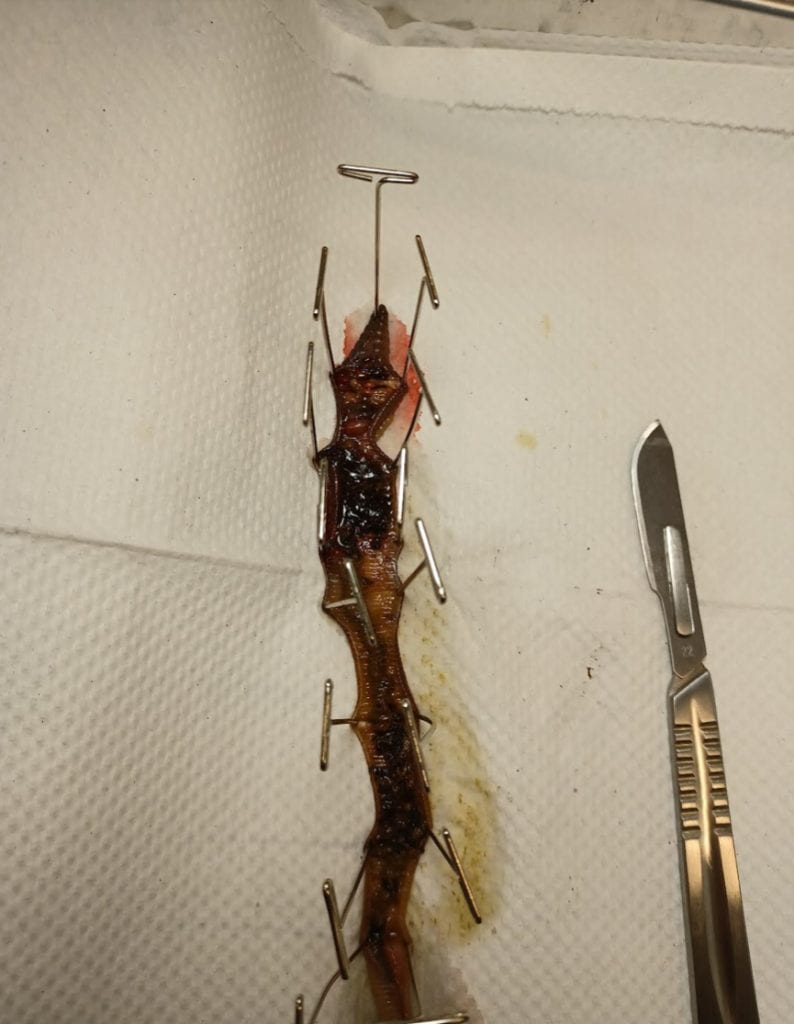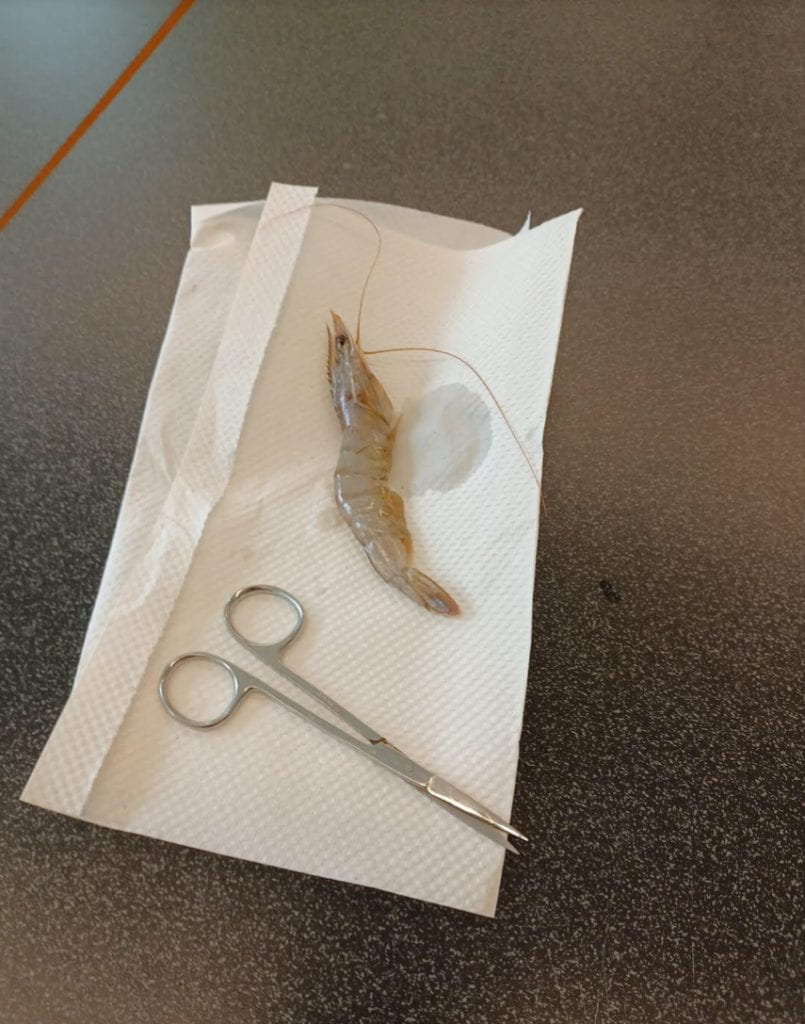Artifacts:

A gratia spicule in the porifera lab. 
A hydra in the cnidarian lab. 
A tapeworm head in the tapeworm lab. 
A dissected earthworm in the internal earthworm dissection lab. 
Dissected squid in the cephalopoda lab 
Dissecting a shrimp in the crustacea lab.
Curricular Response:
The various dissections that I was able to do in this class allowed me to learn about the complex body systems of certain animals. This was interesting because I got to improve at identifying structures that may be different or similar to that of other organisms I had dissected. I feel that I learn best when I am actually implementing what I am taught. Doing the dissections helped in making important observations that were needed in completing and doing well in the lab assignments. Moreover, these observations were connected to studying the many adaptations that helped these animals survive in their habitats. Becoming aware of the changes that these organisms had to undergo while dissecting them definitely aided my understanding of the evolutionary process. The dissections performed created a more engaging and fun way to be able to create a detailed picture of the concepts I learned. These dissections that were done for this class were far more beneficial than just staring at a diagram in a textbook. Therefore, I feel that dissecting various animals expanded my overall knowledge of each organism’s individual body systems and how they evolved into what they are today.
Core Competency Self Assessment:
Which dissection lab are you the most proudest of and why?
I am most proudest of the dissection performed in the Cephalopoda lab. In this lab, I was able to open up the squid and observe its internal structures. I was surprised that I was able to keep many of the structures that I removed completely intact. This made it easy to compare what I had found to that of the squid diagram. It was cool to see all the adaptations the squid had to survive in the ocean while I was dissecting it. This lab made me appreciate the complexities that the animal contains. Furthermore, the fact that the class got to eat the squid we dissected as calamari was also somewhat fun and strange. Overall, I really enjoyed doing this lab and I am proud that I did it well.
What challenges did you face during these investigations?
I did not face many challenges during these dissection labs. However, I would say the most difficult part of them would be in carefully removing the various body structures in each organism for observation. This was because they were quite small and fragile. Another problem was probably the obvious gross smell that the organisms gave off. Sometimes the smell would be so strong it was sometimes distracting. Additionally, sometimes the internal organs were difficult to observe in organisms like the earthworm. This was because the blood and fluid that the organisms secreted would block the view of these structures. Besides these small challenges, my investigations went pretty well.
What strategies did you use to overcome those challenges?
The first issue of dissecting the various body structures was usually solved by cutting slowly or by getting a second organism just in case I made a mistake. If I felt that I butchered an important body structure during removal, I would just try to remove the same part from my backup organism. For the most part, I was able to cut the various body structures cleanly. As for the smell that came from the organisms, I just tried my best to ignore it and continue to work. I think that it definitely helped that I kept my mask on during most of the dissections though. In the organisms that produced a lot of fluid that made it difficult to work on, I just tried to use a paper towel to remove the excess fluids. This helped quite a bit, but it was still somewhat difficult to see the internal organs at times. With this in mind, I just tried to estimate where these structure might be by comparing it with the diagram. In the end, these problems were quite minimal and I was able to complete the labs.



